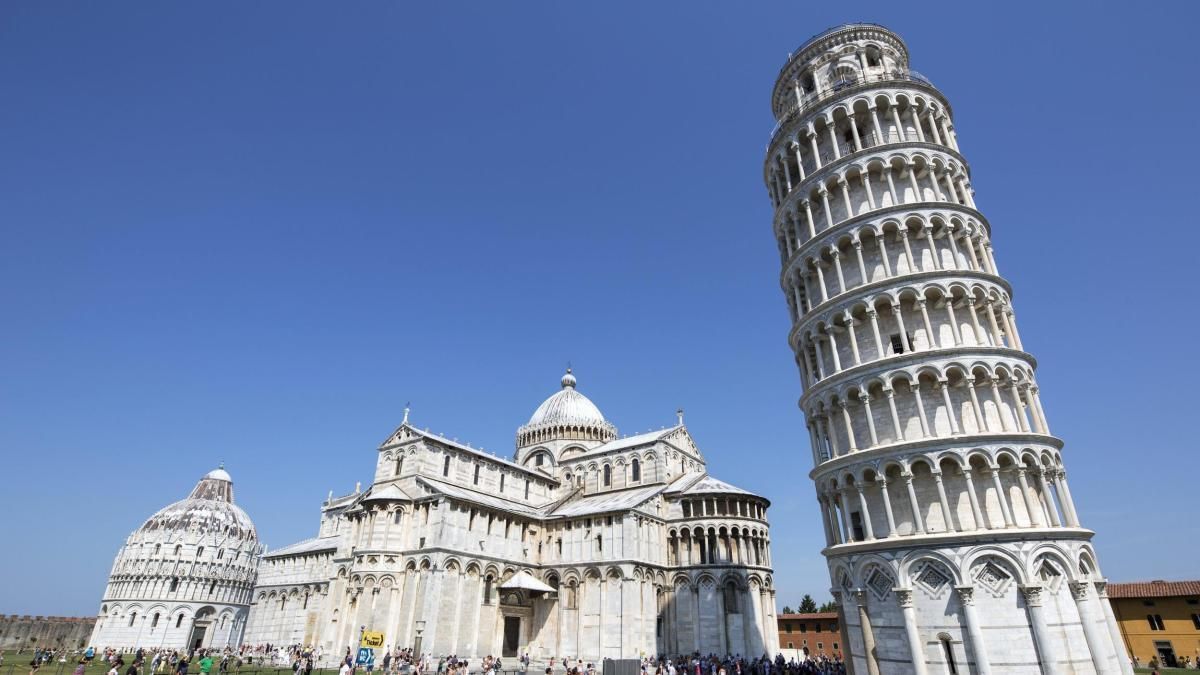Will the Tower of Pisa fall?
The Tower of Pisa needs no introduction – it is as famous as, for example, the Colosseum in Rome. Every year, millions of tourists flock to see it, because it is the only ancient structure in the world that defies gravity with its extreme inclination. But most interestingly, it is the oldest structure in Pisa’s Piazza della Wonderland, with the exception of the cathedral, which is even older.
Its construction began on August 9, 1173, and almost immediately there was a slope, which later gradually increased. That is, the tower in this form has stood for hundreds of years. Perhaps everyone who sees the tower for the first time, asks himself a question – can it fall? To find out, you need to know a little about its past.
The construction of the tower was done in three stages with two long intervals, and as a result it lasted up to 1360, i.e. almost 200 years. It was long believed that the slope of the tower was intentional, that is, it was designed that way from the beginning, but now experts say that this version is unlikely.
Most likely a serious mistake was made in the project – the foundation is small, three meters high, and the ground is rather weak, with an abundance of groundwater. Therefore, after the construction of the third floor in 1178, the structure leaned to the south. The builders decided not to demolish the tower. They strengthened the base and temporarily opened it in 1198, despite the fact that the construction was not completely finished.
In the second half of XIV century, the construction of the bell tower began. Each subsequent storey was constructed at the same angle at which the tower was sloping at the time of its construction. That is how they tried to correct the slope, as a result of which the construction acquired an arched shape.
When the construction was finished in 1370 the tower was an eight-storey cylindrical construction, almost 60 meters high. It was decorated with columns and vaults. After all the floors were erected, the angle of inclination changed by another 1.6 degrees, and then in time it increased to 5.5 degrees. Therefore, all the floors of the tower began to look skewed.
Despite the fact that the Tower of Pisa had stood for hundreds of years, sooner or later it could have collapsed. In 1911 it was recorded that the top of the tower tilted by 1.2 mm every year. In 1990, for the first time in 800 years, it had to be closed due to the increased danger of collapse.
Then a committee of experts was assembled, who had to find a way to prevent the disaster, but at the same time preserve the tourist attractiveness of the structure. The experts decided to attach 600 tons of lead to the northern part of the base of the tower to stabilize it and to prevent it from tilting further to the south.
However, this solution did not yield a positive result. The rate of inclination of the structure did not decrease even after an additional 300 tons of lead was attached to the base along with ground anchors. It was then decided to remove some of the soil under the north side of the tower foundation.
This measure proved more effective, and the tower gradually began to level out. Its top deviated to the north by 45 centimetres. The experts say that they managed to turn the clock back 200 years. But the tower is not completely aligned. The tower is still tilted about 5 degrees off its axis.
Despite all the mistakes made in the project, and the soft ground, the Leaning Tower of Pisa proved to be quite stable. There are several reasons for this. In many respects it was saved by the fact that the construction was carried out in stages. That is, the builders, in fact, gave it time to consolidate in the soft, pliable soil.
In addition, the base of the tower is larger in diameter and heavier than the top, so its center of gravity is below the ground level. All this increases its stability. It should also be noted that soft soil, on the one hand, reduces the stability of the tower, but on the other hand, increases its seismic resistance. That is, the soft soil dampens the vibrations of the soil during earthquakes.
There are no plans to interfere with the tower in the near future. But it is constantly monitored. Special equipment records the angle of inclination, as well as the level of groundwater. Therefore, it is safe to say that the structure is absolutely safe now.
